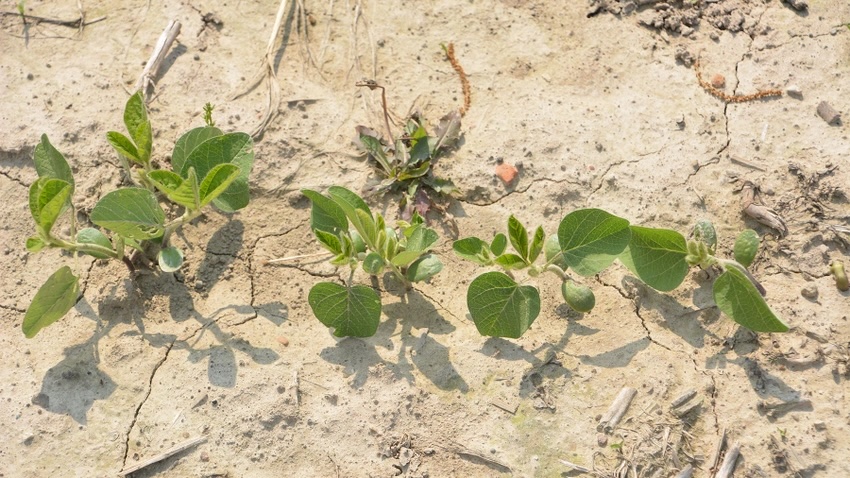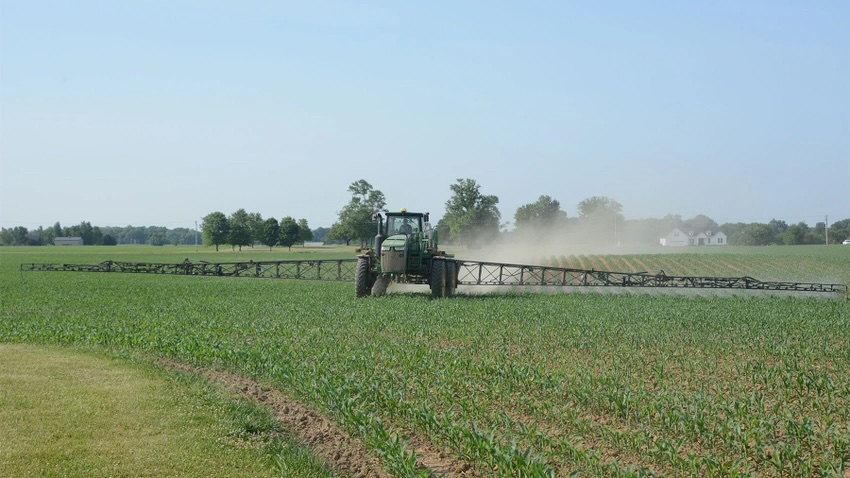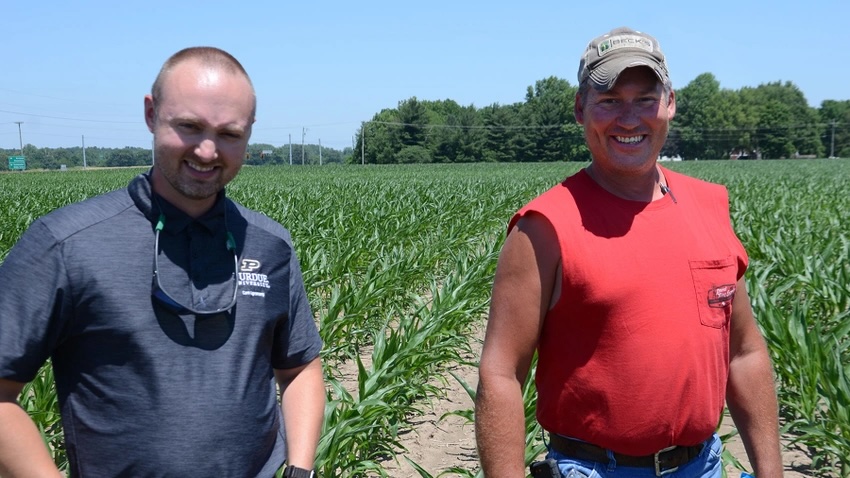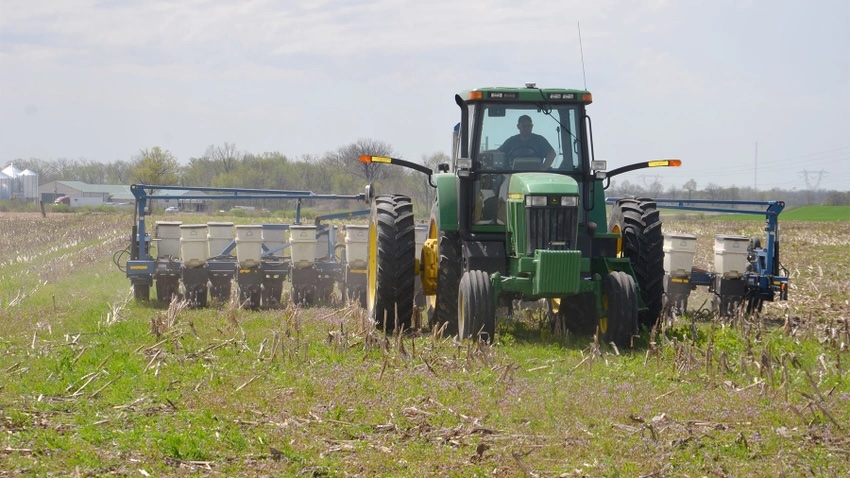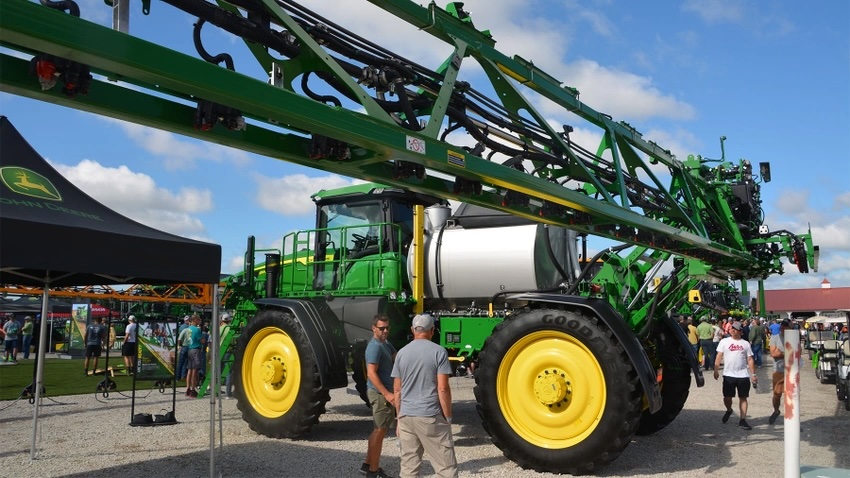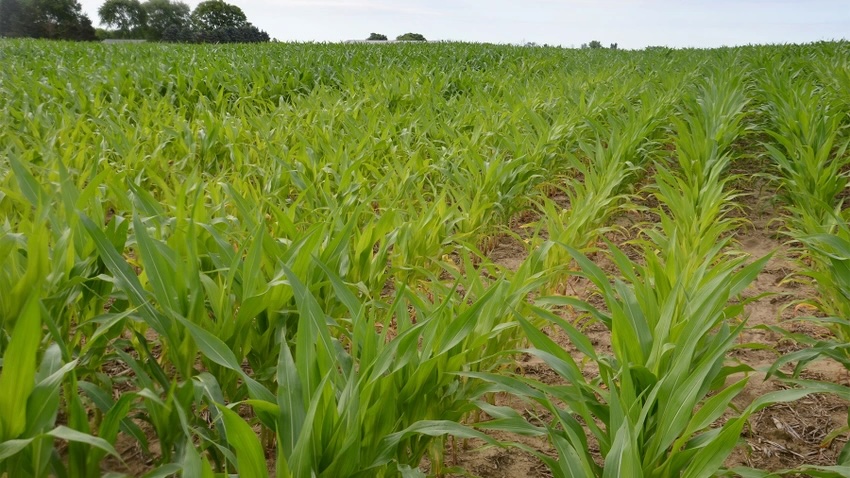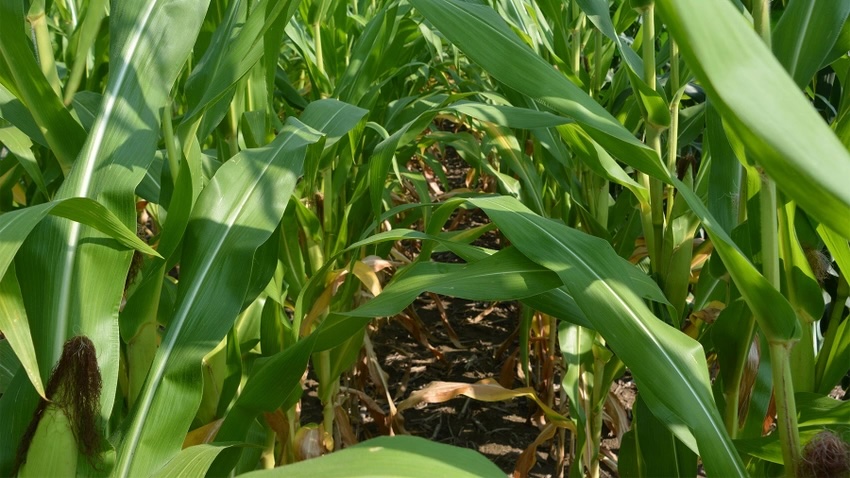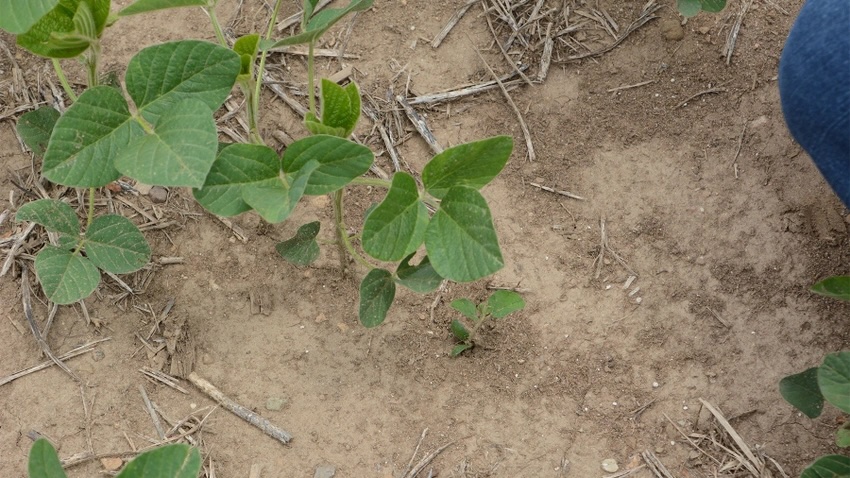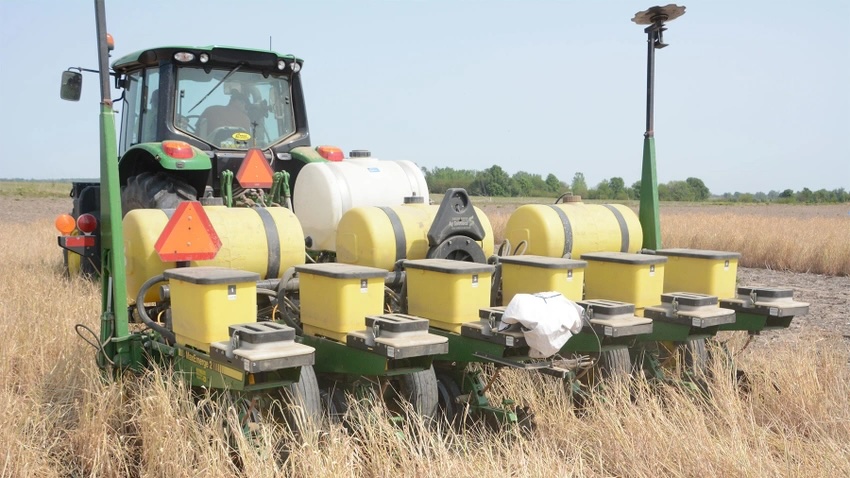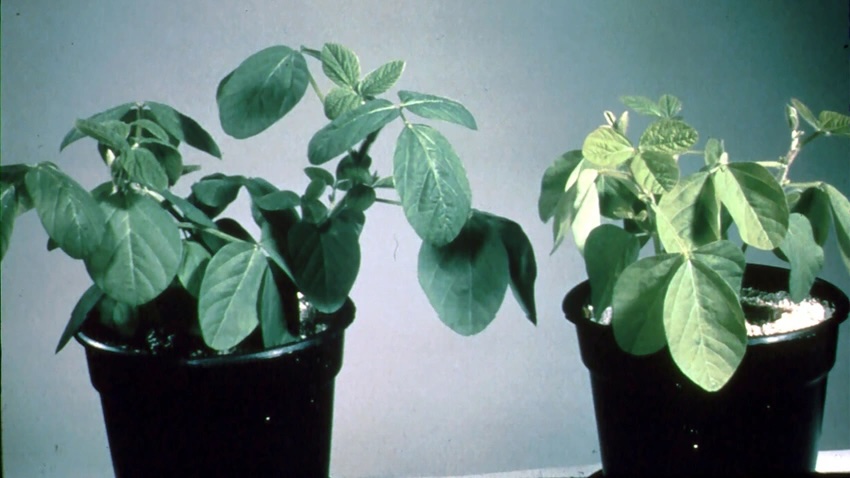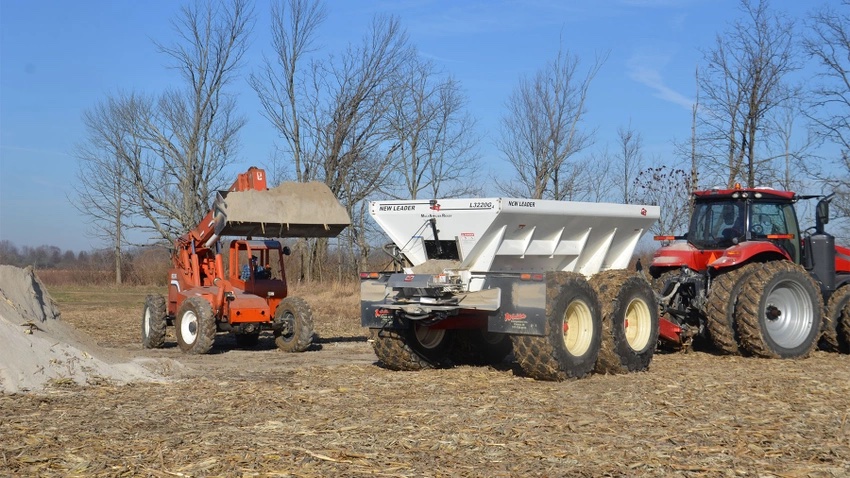Why are soybean leaf edges turning brown?
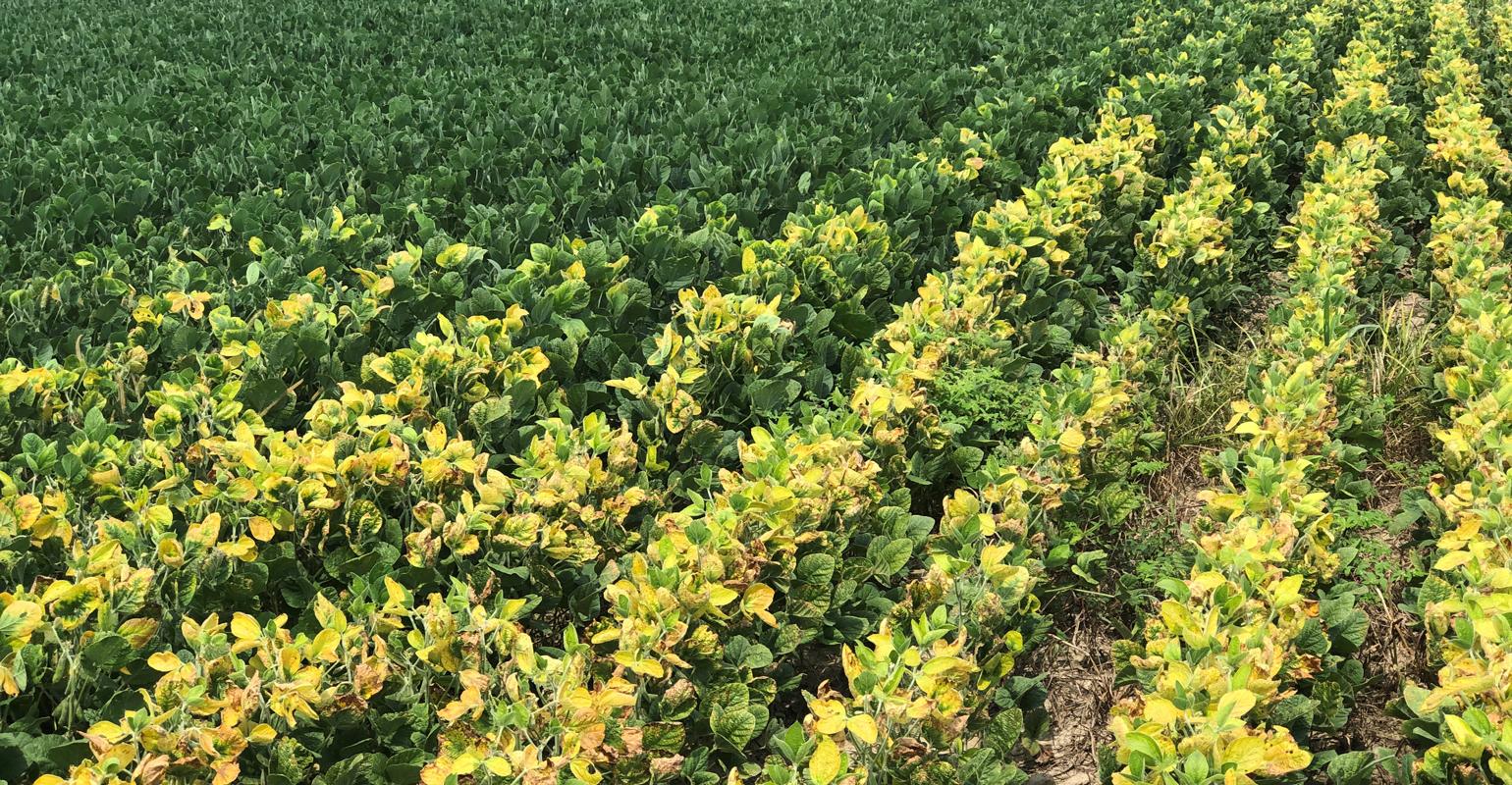
Soybean Corner: Perhaps it’s lack of potassium in the plant, but it could be a disease.
Jul 06, 2021
We are noticing soybean leaves that are yellowish-brown around the edges. My dealer thinks they’re short on potassium. Is he right?
The Indiana certified crop adviser panel answering this question includes Betsy Bower, Ceres Solutions, Lafayette; Jamie Bultemeier, agronomist, A&L Great Lakes Lab, Fort Wayne; and Andy Like, farmer and CCA, Vincennes.
Bower: The last few years we’ve seen what you describe. It is called soybean top dieback. Currently, there is no consensus on what causes soybean top dieback. When it was discovered and named 30 years ago in Iowa, Extension specialists indicated it was due to diseases phomopsis and diaporthe spp. But since then it has also been associated with soybean cyst nematode presence and low soil tissue potassium.
Typical low potassium symptoms are yellowing of leaf margins on the most fully developed trifoliate below the growing point. Soybean top dieback symptoms, however, occur on the youngest leaves at the top. You can determine potassium deficiency by sending in a leaf tissue sample to any soil testing lab. Know that you can see potassium deficiency even if your soil test K is good in compacted areas, dry soils or anywhere nutrient uptake is compromised. Take 25 trifoliates without petioles of the most fully developed trifoliate below the uppermost growing point.
You can also send a few plants with soil and roots with pictures to the Purdue Plant and Pest Diagnostic Lab. They can look for diseases on the tissue and SCN on the roots and in the soil. PPDL does not do nutrient tissue analysis.
Bultemeier: The yellowing of soybean leaf margins can be the visual symptomology of potassium deficiency, but it can also be confused and compounded with other things. The key to a definitive determination is a tissue test, provided the plant has not passed the R6 growth stage.
Be certain to sample the crop correctly. Reference data to determine a deficiency is based on sampling the most recently mature leaf from 25 or more plants. This must be the plant part sent in order to use the reference data from the lab. The topmost set of leaflets may not be fully mature, even late in the season for indeterminate soybean varieties. Start at the top of the plant and work downward, looking for the first leaf that is full size with the same green color and level of pubescence as the leaves below it. Often this is three to five nodes down the plant.
If the tissue test confirms the potassium deficiency, the question then becomes, why did the deficiency develop? Is it a lack of potassium in the soil or the plant’s inability to access soil potassium? A soil sample collected with the tissue sample can help answer this question.
Like: Your dealer is likely correct, but you will not know for sure until you pull a leaf tissue sample. Potassium deficiency in soybeans typically shows up in fields with lower K levels when soybeans are growing rapidly and requiring high daily uptake of potassium. When the plant is growing rapidly, the soil can’t meet the plant’s demand for potassium, especially in dry conditions. After a significant rainfall event and adequate soil moisture returns, visual deficiency symptomology is normally reduced or eliminated. However, the problem remains and will likely be a yield-limiting factor.


